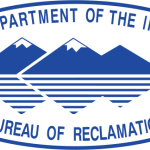- Settore: Government
- Number of terms: 15655
- Number of blossaries: 0
- Company Profile:
A U.S. Department of the Interior agency that oversees water resource management incuding the oversight and operation of numerous diversion, delivery, and storage projects the agency has built throughout the western United States for irrigation, water supply, and attendant hydroelectric power ...
A horizontal strip or shelf built into an embankment or cut to break the continuity of the slope, usually for the purpose of reducing erosion or to increase the thickness of the embankment at a point of change in a slope or defined water surface elevation. A horizontal step in the sloping profile of an embankment dam. A shelf that breaks the continuity of a slope, or artificial ridge of earth. A ledge or shoulder, as along the edge of a road or canal. An artificial ridge of earth.
Industry:Engineering
Une utilisation qui diminue la quantité d'eau disponible pour un autre usage. Utilisations de l'eau normalement associés aux activités de l'homme, principalement municipale, industriels et utilisations d'irrigation qui appauvrissent l'approvisionnement en eau. Eau retirée des fournitures disponibles sans retour direct à un système de ressources de l'eau, pour des utilisations telles que la fabrication, l'agriculture et des aliments de préparation. Une utilisation de non-consommation serait un telles que la navigation de plaisance ou la natation. Voir Utilisation bénéfique. Combiné des quantités d'eau nécessaires pour la transpiration de la végétation et de l'évaporation du sol adjacent, neige, ou interception des précipitations. Aussi appelé : exigence, exigence de l'irrigation des cultures, exigence d'une utilisation non rationnelle des cultures. Voir l'évapotranspiration.
Industry:Engineering
Eine Nutzung die verringert die Menge von Wasser verfügbar für einen anderen Zweck. Wasser verwendet normalerweise Mannes Aktivitäten zugeordnet, vor allem kommunale, industrielle und Bewässerung verwendet, die Wasser-Vorräte zu verbrauchen. Wasser aus verfügbaren Vorräte ohne direkte Rückkehr zu einem Wasser-Ressource-System, für Anwendungen wie z. B. Produktion, Landwirtschaft und Lebensmittel Vorbereitung entfernt. Eine nonconsumptive Nutzung wäre einer wie Bootfahren oder schwimmen. Siehe vorteilhaft verwenden. Kombinierte Mengen Wasser benötigt für Transpiration von Vegetation und Verdunstung aus dem angrenzenden Boden, Schnee, oder Niederschlag abgefangen. Auch genannt: Anforderung, Ernte Bewässerung erforderlich, verbrauchende Anwendung Anforderungen zuschneiden. Finden Sie unter Evapotranspiration.
Industry:Engineering
Un uso che riduce la quantità di acqua disponibile per l'uso di un altro. Acqua utilizza normalmente associati con le attività dell'uomo, principalmente comunali, industriali e usi di irrigazione che riducono i rifornimenti idrici. Acqua rimosso dai rifornimenti disponibili senza ritorno diretto ad un sistema di risorsa acqua, per usi, come la preparazione di produzione, l'agricoltura e cibo. Un uso nonconsumptive sarebbe uno come il canottaggio o nuotare. Vedere uso benefico. Combinato quantità di acqua necessaria per traspirazione da vegetazione e per evaporazione dal suolo adiacente, neve, o intercettato precipitazione. Chiamato anche: ritagliare requisito, requisito di irrigazione delle colture, il requisito di utilizzo consuma. Vedere evapotraspirazione.
Industry:Engineering
水の別の使用可能量を軽減を使用。通常、水使用の人間の活動、主に地方自治体、産業と水の供給を枯渇灌漑の使用に関連付けられています。水供給システムには、水リソース、製造業、農業、食糧の準備などを使用して直接返すなし可能から削除します。Nonconsumptive の使用は、ボートや水泳など 1 つでしょう。有益な使用を参照してください。水の量の合計は、蒸散の植生と隣接する土壌、雪からの蒸発に必要なまたは降水量を傍受します。別名: 要件、作物灌漑要件、結核患者の使用要件をトリミングします。蒸発散量を参照してください。
Industry:Engineering
这会削弱的水可供使用另一个量的使用。用水通常与人类的活动,主要是市政、 工业、 和消耗水供应的灌溉用途。水从无水资源系统,使用 (比如,制造业、 农业和食品制备直接返回可用用品中删除。Nonconsumptive 的使用会一如划船或游泳。请参阅实益用途。所需的蒸腾的植被和从相邻的土壤、 雪、 蒸发或截获降水的水的联合的款额。也称为: 裁剪要求、 作物灌溉需、 消费的使用要求。请参阅蒸散量。
Industry:Engineering
Un uso que disminuye la cantidad de agua disponible para otro uso. Usos del agua normalmente asociados con las actividades del hombre, principalmente municipales, industriales y usos de riego que agotan los suministros de agua. Agua quitado los suministros disponibles sin retorno directo a un sistema de recursos de agua, para usos tales como la preparación de alimentos, la agricultura y la manufactura. Un uso nonconsumptive sería uno como canotaje o natación. Ver uso beneficioso. Combinado cantidades de agua necesitan para transpiración por la vegetación y la evaporación del suelo adyacente, nieve, o interceptaron precipitación. También llamado: recortar la exigencia, requisito de riego de cultivos, requisito de uso tuberculosa. Consulte la evapotranspiración.
Industry:Engineering
Rate at which electric energy is used, expressed in kilowatts, whether at a given instant, or averaged over any designated period of time. Maximum water use under a specified condition.
Industry:Engineering
The Wild and Scenic Rivers Act (Public Law 90-542) selects certain rivers possessing remarkable scenic, recreational, geologic, fish and wildlife, historic, or other similar values, for preservation in free-flowing conditions. Those selected under recreational criteria may have undergone some diversion or impoundment in the past. Selected rivers and streams have been placed into the National Rivers Inventory by Acts of Congress; others are proposed for inclusion into the system. See Wild and Scenic Rivers Act of 1968.
Industry:Engineering
The ratio of real to total power. In alternating-current power transmission and distribution, the cosine of the phase angle between the voltage and current. When the load is inductive such as an induction motor, the current lags the applied voltage, and the power factor is said to be a lagging power factor. When the load is capacitive such as a synchronous motor or a capacitive network, the current leads the applied voltage, and the power factor is said to be a leading power factor. The ratio of the true power passing through an electric circuit to the product of the voltage and amperage in the circuit. This is a measure of the lag or load of the current with respect to the voltage.
Industry:Engineering
